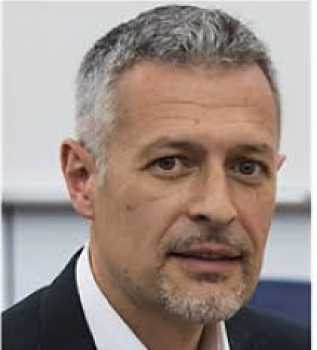Events
Cyber-Prosthetics as Body-centric Electromagnetic Devices: From Structural to Metal-free Bio-integrated Antennas
Centre for Electronics Centre for Advanced Robotics Centre for Bioengineering Centre for Complex Systems Centre for Experimental and Applied Physics Centre for Human-Centred Computing Centre for Sustainable EngineeringDate: 2 May 2025 Time: 10:30 - 11:30
Location: Graduate Centre GC601 Montagu LT + Online
Summary
The concept of Cyber-Prosthesis redefines implantable devices not only as mechanical surrogates but also as bodycentric wireless nodes capable of sensing, storing, and transmitting biophysical information. Within this paradigm, the structural components of prosthetic implants—such as orthopedic fixtures, dental screws, stents, and heart valves—are converted into antenna systems operating in the UHF RFID band. These systems communicate through body tissues by leveraging battery-less backscattering techniques, requiring only minimal hardware and no modification of the implant's mechanical integrity.
The lecture will present an overview of antennification strategies, from T-match and inductive loop matching to volumetric and conformal integration with metallic and polymeric implantable structures. Experimental case-studies will illustrate wireless measurement of local temperature, stress, and even early-stage failures such as micro-cracks or post-surgical infections, using standard off-the-shelf RFID readers.
A central part of the talk will focus on graphene-enabled wireless implants. In particular, Laser-Induced Graphene (LIG) is emerging as a disruptive technique to directly engrave conductive patterns on biocompatible polymers such as PEEK and PI, which are already widely used in medical-grade implants. The recent possibility of electroplating LIG with gold enables a substantial boost in radiation efficiency and ensures long-term biostability and biocompatibility. Furthermore, graphene transfer techniques now allow the deposition of pre-designed layouts onto bioresorbable substrates, enabling the realization of fully transient cyber-implants for postoperative monitoring, designed to safely disappear after fulfilling their diagnostic role.
Biography
Gaetano Marrocco obtained the laurea in Electronic Engineering and Ph.D. in Applied Electromagnetics from the University of L'Aquila, It-aly, in 1994 and 1998, respectively. Researcher at the University of Roma Tor Vergata in 1994-2014. Associate Professor of Electromag-netics in 2013-2017. Guest Professor at the University of Paris-est Marne la Vallèe in 2015, and Full Professor at the University of Roma Tor Vergata since 2018. Since 2018 to 2024 he served as Director of the Medical Engineering School and currently is the Deputy Director of the Department of Civil engineering and Computer Science Engi-neering.
The first phase of his research career was devoted to the modelling and designing structural broadband and ultra-wideband antennas for Satellite (ESA, ASI), Avionic and Naval (Leonardo) communications. Since 2003, he has been investigating sensor-oriented miniaturized antennas for Biomedical Engineering and Radiofrequency Identification (RFID), contributing to the move
from the RF labelling of objects to the passive sensor networks in the Internet of Things era. He carried out pioneering research on bodycentric battery-less wireless sensors concerning textile RFID antennas, tattoo-like sensors (flexible and stretchable epidermal electronics), and radio-sensors embedded inside implantable prostheses.
He served as Associate Editor for the IEEE Antennas and Wireless Propagation Letters, IEEE Jour-nal of Radiofrequency Identification and member of the IEEE Antennas and Propagation Society Awards committee. Currently he is track Editor for the IEEE Journal of Flexible Electronics. More-over, he is the chair of the Italian delegation URSI Commission D Electronics and Photonics. He was the chair of the Local Committee of the V European Conference on Antennas and Propaga-tion (EUCAP-2011), TPC chair of the 2012 IEEE-RFID TA in Nice, France, TPC track-chair of the 2016 IEEE Antennas and Propagation Int. Symposium, TPC track-chair of IEEE-RFID 2018 USA and General co-Chair of the IEEE Flexible, Printable Sensors an Systems (FLEPS) in Tampere (Finland) 2024.
Prof. Marrocco is the director of the Pervasive Electromagnetics Lab (pervasive.ing.uniroma2.it) and the co-founder and president of the University spin-off RADIO6ENSE (www.ra-dio6ense.com), which is active in the short-range electromagnetic sensing for the Industrial In-ternet of Things, Smart Manufacturing, Automotive BioEngineering, and Pharma. He is listed in the PLOS ranking of Top 1.5% Scientists Worldwide (source Univ. Stanford, 2024) and in the first three places on ScholarGPs for worldwide RFID impact 2024.
| Contact: | James Kelly |
| Email: | j.kelly@qmul.ac.uk |
Updated by: Akram Alomainy


